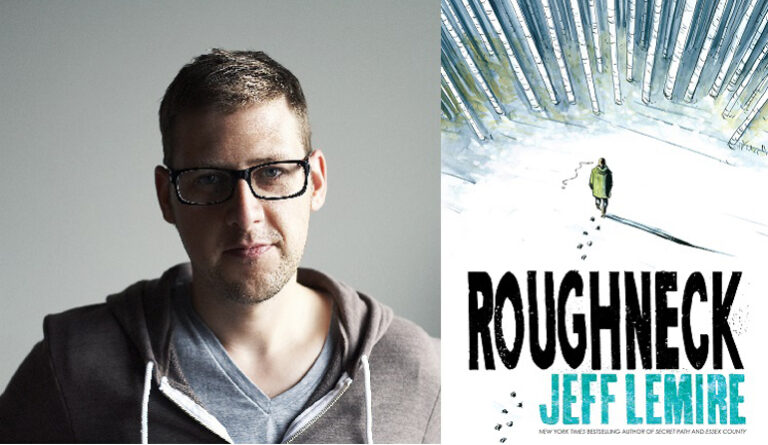The Interplay of the Collective and the Individual in We Ride Upon Sticks

Quan Barry’s comedic 2020 novel We Ride Upon Sticks presents the story of a Massachusetts high school field hockey team that has ostensibly turned to the dark arts to turn their season around. After the starting eleven sign their names and pledge their mischief to the darkness in an Emilio Estevez-emblazoned notebook—known thereafter simply as Emilio—the Danvers Falcons run roughshod over their opposition, all the way to the state final. While carrying the reader joyously through the irreverent narrative, Barry’s first-person plural narration creates the semblance of a unified whole that is also prescient in its selective individuation: while doing the necessary work of dipping into single characters’ arcs to develop the team members as individual people, that separation and isolation prepares the reader to meet and accept the novel’s ending.
From the start, Barry creates and confirms the strength of the team’s collective identity in the midst of the Falcons getting trounced at a summer field hockey camp: as the ball progresses toward “our goal,” “there really wasn’t any reason for those of us on offense to keep watching, our defense porous as a broken window.” The team is a unit, but one that also shifts and separates as necessary to create verisimilitude, clarify action, and identify the players by name, position, and so on. The emotional collective that Barry creates while the team is at its lowest is critical to the pressure the team identity exerts on the rest of the novel. She writes, “If we could’ve rolled over and offered our throats, our pale underbellies flashing in the July sun, we would’ve, each of us a white flag”—the collective feeling here is owned and agreed upon by the whole, but the action is executed by each individual. In this case, the group feeling exists and the matching singular actions would follow (if the strictures of the hockey camp would allow it); the reverse is also true: what begins as an individual act can become a group imperative, as is the case when goalie Mel Boucher begins the pact.
The stress of being “scored on a whole bunch” is what pushes Mel to write a pledge in Emilio, alone in the dorm, and the idea comes to her because of a trip to the school library the year before, with a classmate who isn’t even part of the team. Shortly thereafter, Mel holds one of the best teams to a draw and becomes an instant celebrity in the camp; others then begin to arrive, “alone and in pairs” to sign and receive the symbol of the pact: a piece of tube-sock tied around the upper arm. While every member of the team signs on, the way that the novel reveals the “alone and in pairs” progression is treated with careful mystery, zeroing in on specific and noteworthy moments of signing. Boy Cory—the only boy on the team and so-called to distinguish him from the rich, beautiful Girl Cory—receives one of the spotlights, when he signs once Mel’s notebook lands firmly in the charismatic and forceful hands of Jen Fiorenza. Boy Cory is the first to feel the interior tie between the signers: “Once his name was in the book and he was tied up, he felt the briefest shiver, as if the two of them were connected in some way, him a thrall and her the master.” We also see the last signing, completed by Abby Putnam, the earnest, health-conscious optimist who is also the descendant of noted Salem accuser Ann Putnam the younger. Abby objects to the pact on principle but is convinced to take part on the grounds that if she doesn’t believe in alternative powers, there’s no harm in signing. Abby is also the only Falcon other than Mel to have made the camp All-Star team. She scores a goal in the initial drubbing that makes Mel pick up the pen, and she scores one in the All-Star game. That goal ripples through the team: “In the stands, our individual arms as if collectively burning.”
This notion of something at once individual and collective is the primary engine of the novel. Despite the intensity of the team connection, characters are able to pursue their own particular goals and actions seemingly under the radar. The first of these is Mel’s making the pact, and Mel also gets the first solo character portrait, in which the reader is introduced to her family and home life. It makes perfect sense for Mel to be the focus of these first separations from the collective lens, but this narrative choice is also a significant and load-bearing part of the plot, and it is so because everything unfolds under certain limits. The collective narrative voice muses, “As far as we knew, Mel was still a ‘viarge’ that July night…We had every reason to think Mel had never even kissed anyone. Things only went off the rails after the all-star game.” “As far as we knew” makes it clear that the communal voice can’t know everything, even despite the communal consciousness the pact seems to create. It is a consciousness that binds the teammates together and even allows them certain abilities to note others’ locations and activities, as well as to understand or interpret the voices of Jen Fiorenza’s anthropomorphized bangs and a troubling-looking mark on Mel’s neck, affectionately known as the Claw and le Splotch, respectively. That collective consciousness even pulls in the team coach, Marge, who never quite seems to know what’s going on.
The novel is marked by careful demonstrations of the interplay and boundaries between the collective and the individual. Those boundaries create several of the novel’s key tensions that exist beyond the trajectory of the field hockey season and include someone being involved in a sexual relationship with a teacher, crises of sexual identity, and family traumas of varying types. Each player is on their own journey, one that is within view of the reader, though sometimes only partially, but is often obscured from the rest of the team. Post-pact, post-camp, once the school year begins, Julie Kaling’s narrative is a clear demonstration of this. The adopted daughter of a former priest and a former nun, Julie has been raised severely and strictly. Her added plea in Emilio is for help to “be the person I was meant to be.” At the center of that wish is a secret sewing project debuted at the school formal, a sleeveless purple tuxedo that flies entirely in the face of her self-effacing upbringing, so much so that another teammate reveals that “Mrs. Kaling had tried to sprinkle holy water on her daughter, afraid that she’d been possessed.” When Julie appears wearing it—and appears with a clandestine boyfriend—the effect on everyone is a triumphant shock: “Then everyone gasped, including the photographers. Internally all of us on the Emilio party line began shouting things like, hell yeah! and work it! Heather Houston chiming in with an ave regina!” While the novel suggests that at least some of the teammates knew Julie was spending her free periods in the home economics classroom, the reveal of the results smacks of real surprise.
The ability for the players to surprise each other—despite their many internal and external links—is the crux of the novel, and Barry uses the ordering of the solo portraits to great effect for this. Each of the starting eleven gets their own spotlight and a chance to explore the specific and individual nature of their own goals, struggles, and secrets. Because Mel Boucher gets the first one, before the vast majority of the school year unfolds, when the final midnight revel before the state championship reveals that she is not only the one to have had an affair with a teacher but is also pregnant, the moment is truly startling. That night involves the unveiling of many truths—so many of the secrets the team has been masking and even some among their families, as well—and the novel makes one more startling choice: to leave the championship game off the page altogether. Instead, the final solo portrait, Abby Putnam’s, reveals the outcome of the game in distant retrospective on the day that the team reunites in Danvers for Mel’s wedding many years later.
The championship game is decided on penalty shots, and Abby, who was first built up in the narrative as a clear offensive talent, misses her shot on purpose. She does so to liberate the Falcons from the internalized belief in their pact, she says, and to separate them from continuing the real harm that they caused in dedicating their baser urges to the darkness. The real surprise of this choice, though, is how effectively Barry sets up the narrative in order to make it possible. The private separations from the team’s collective consciousness, which the reader has been primed to note and accept from the beginning of the novel, enables the very structure of Abby’s actions. Because there are limits to what the collective, connected “Emilio party line” can access, and because the reader has been made aware of those limits in multiple other instances, the ending is simultaneously well-grounded and fittingly unexpected.


